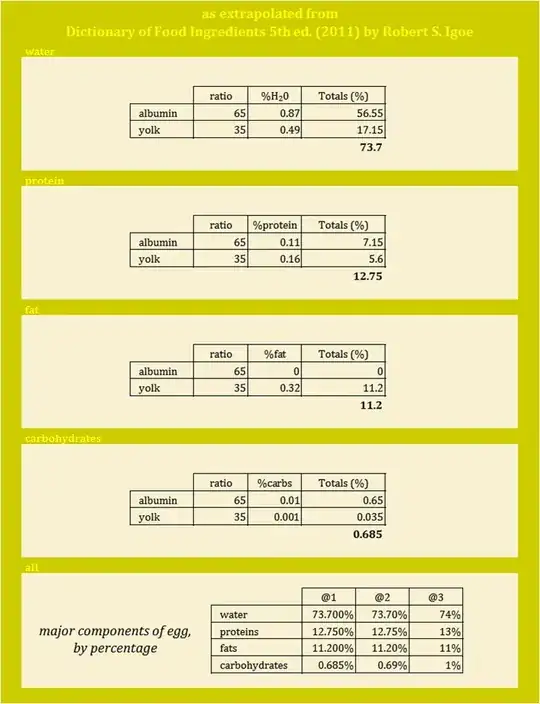There seems to be a lot of disagreement about cooking "light" (as in texture) scrambled eggs, which would seem to be one of the simplest of foods. (To be clear, I'm specifically asking about the "standard" light and puffy variety of scrambled eggs here, rather than the creamy, very small-curd, slow-cooked scrambled eggs which are often served wetter and heavier.)
There seem to be two main camps: (1) cook your eggs in a blazing hot pan as quickly as possible, or (2) cook over low or medium-low heat and stir frequently until the eggs come up to temperature over anywhere from 5 to 15 minutes. Adherents of the first method claim that the fast cooking time will keep the eggs tender and the hot pan and burst of initial steam created will puff them up. Adherents of the second method claim that gentle cooking will keep the eggs tender and the long cooking time will give more opportunity for steam to gradually increase lightness and texture.
The goals of both camps appear to be similar, but they suggest radically different techniques to achieve them. (For some examples of this disagreement in answers on this site, see here for a question whose top-rated answer argues for cooking in "seconds not minutes," and here for a similar question whose top-rated answer says the solution is "at least ten minutes of slow cooking.")
Note that this question also applies to omelet technique, where some chefs insist that the only way to produce a light tender omelet is cooking slowly over low heat, while others seem to follow the Julia Child method of cooking a thin layer of egg in a very hot pan for only a matter of seconds.
In any case, my question: Is there any scientific rationale to resolve this dispute? Is one method actually proven better than the other through experiment? (Or do both methods have proven advantages? Or maybe other aspects of technique can influence results and allow both methods to be successful, but under different conditions?)
EDIT: Based on discussion in comments, let me try to make this more specific. We can look at, for example, the editors of Cooks Illustrated, who present in their experiments to produce "Fluffy Scrambled Eggs":
We've tried cooking scrambled eggs over medium heat but the eggs got tough, dried out, and overcoagulated, like a badly made meringue that "weeps." A hot pan will begin to cook eggs instantaneously, for the quickest coagulation.... Two eggs should cook into big curds in about 30 seconds. The larger the curds, the more steam is pocketed inside, and the more the eggs will continue to cook once off the heat. We like scrambled eggs soft and juicy, so they look positively underdone when we make that final fold and push them out of the pan.
On the other hand, Harold McGee in On Food and Cooking states:
The Key to Scrambled Eggs: Slow Cooking Scrambled eggs made in the usual quick, offhand way are usually hard and forgettable. The key to moist scrambled eggs is low heat and patience; they will take several minutes to cook.... Texture is determined by how and when the eggs are disturbed. Large irregular curds result if the cook lets the bottom layer set for some time before scraping to distribute the heat.
McGee doesn't explicitly mention fluffiness or lightness, but I've seen other proponents of the slow method mention it. What these two sources do agree on is that the opposing method makes eggs "tough," "hard," and "dried out," but their chosen method keeps eggs "moist" and "juicy" as well as "soft" and "tender." (Notably, after discounting the fast method for scrambled eggs, McGee goes on immediately to point out how a hot, fast cooking method is a requirement for good omelets.)
These are two sources which explicitly tend to base their claims on detailed experiment and food science. Other than McGee's mentioning of the ability to alter final curd size for slower eggs, there seems to be little distinction in the rhetoric for these opposing methods.
So, are there actual advantages for one method over the other (aside from time for fast eggs and better ability to vary curd size for slow eggs)? If no, why do even food science experts make such strongly worded conflicting claims? Do both methods -- as Tom Raymond seems to argue in his answer -- produce effectively equivalent results, with time being the main difference? Or is there some truth to the any claims for superiority in at least some aspects for one side or the other?
I know this is a broad question, but some possible information that might begin to answer it: Anyone know of experimental studies (or summaries of them) that actually measure moisture content or volume or tenderness in different egg cooking methods to corroborate the various descriptions of "moist/juicy" and "soft/tender/fluffy" vs. "tough/hard" and "dried out"? Are there theoretical reasons why either method should work better in some aspects (e.g., how egg proteins coagulate at different speeds, etc.)?
Perhaps the consensus is that one can cook good eggs either way once one understands the subtleties of cooking eggs that way. But even if that's true, why are many authoritative sources so quick to dismiss the other method? (Perhaps there's even an important history to this dispute that explains some of it; otherwise, I'm not sure how to explain such a strong conflict.)
